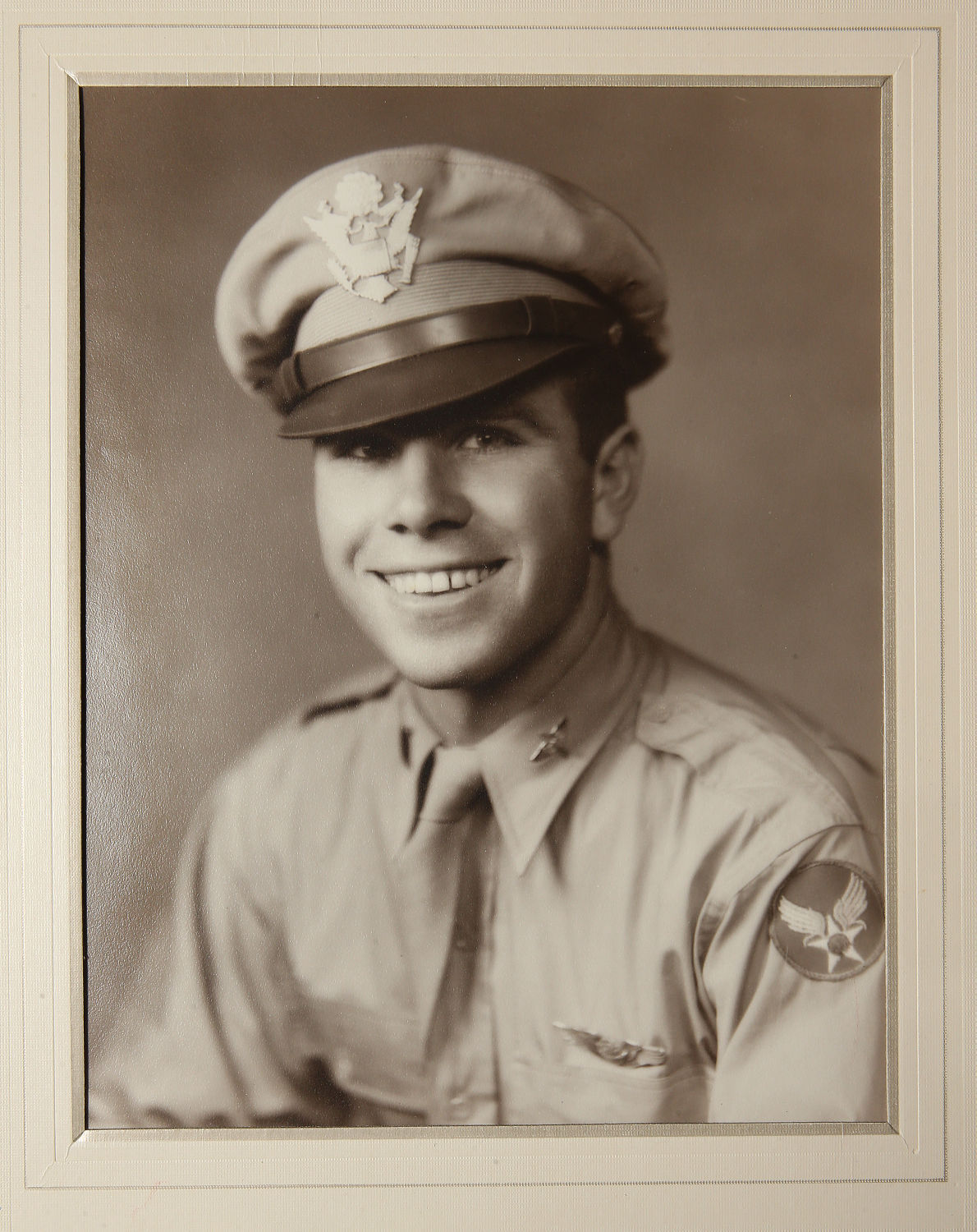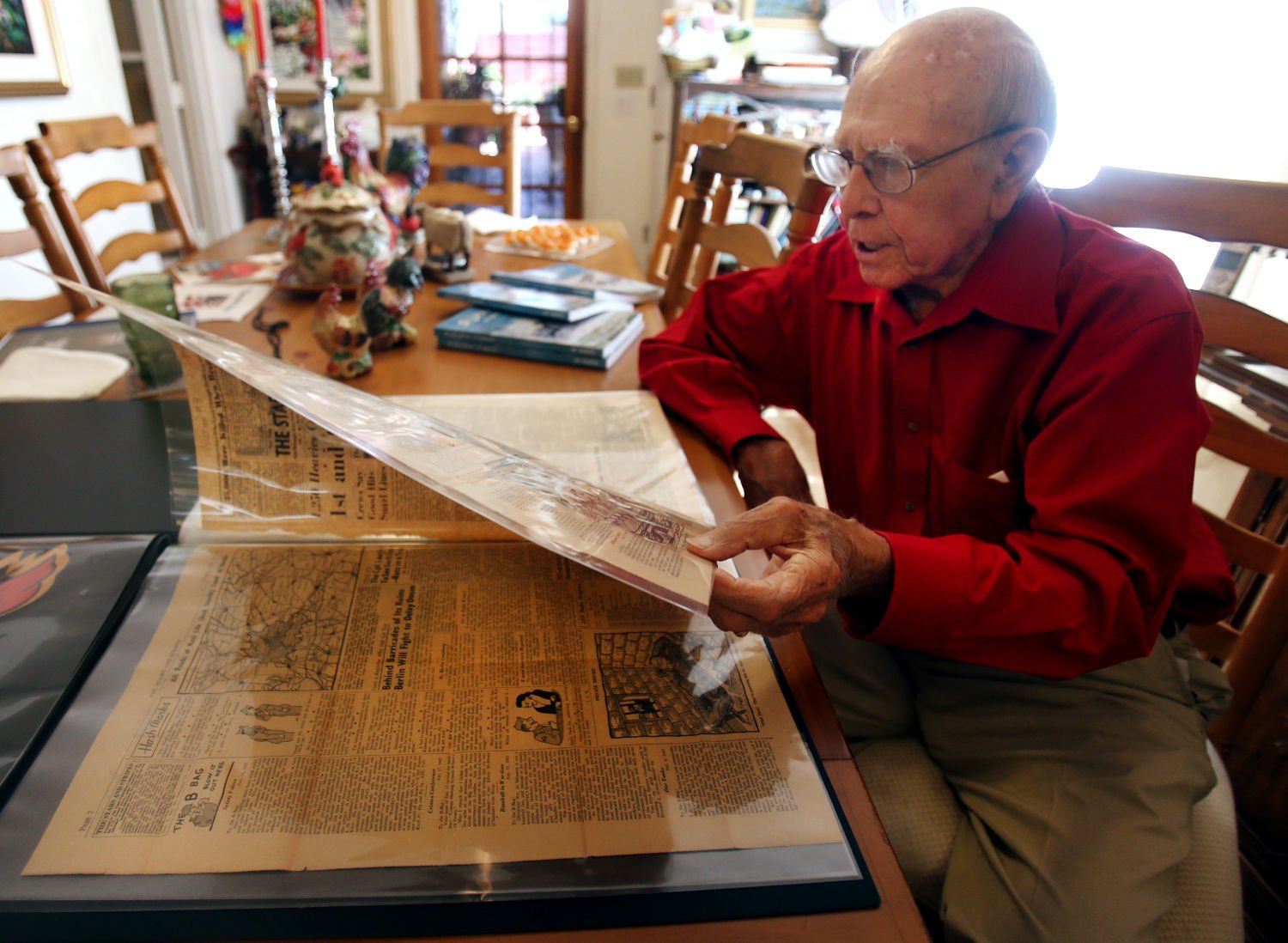On paper, Art Schaefer served as a navigator in World War II, responsible for getting his crew to their target and finding the safest, quickest path out after dropping bombs over Germany.
He stepped out of that role, however, on occasion — once while under attack in the air when he fired on German fighters who had shot down 25 percent of his squadron.
He also fondly recalls collecting candy and gum ahead of food-drop missions in Holland as a treat for children waiting below for cheeses, meats, canned food and other items.
 |
At 93, Schaefer looks back on his military experience as rewarding, but says that was never his plan.
Before entering preflight training, he had never been up in airplane except when he was 4 years old, though he has no recollection of the experience.
As a student at the University of Arizona, Schaefer was set on becoming a mining engineer.
At that time, every male was required to take basic training through the ROTC program for the first two years. But at the end of those two years, Schaefer decided to volunteer for advanced training.
It was 1945 when he made his way to England as part of the 385th Bomb Group Eighth Air Force to serve in the war.
He recalls experiencing tailwinds that enabled the crew and their B-17 to make it to their destination quickly, but having to fight against winds of up to 115 mph on the way back was no easy task.
 |
“We’d get to the target fast, and that was when you were working for the government,” he said. “By the time you turned around, you were working for yourself, getting your fanny out of there.”
Though Schaefer was never wounded, his closest call came on his seventh mission, over Dresden — one he wasn’t scheduled for but wound up on when another navigator was hospitalized.
Unable to identify their primary target due to cloud cover, the crew headed for Dresden, which was being bombed by the British.
Schaefer’s squadron came under attack, with three of its 12 planes being shot down, forcing him to man two guns — one on either side of the plane’s nose, which he used to shoot down one enemy plane and damage another.
It wasn’t until closer to the end of the war when Schaefer participated in what he calls mercy missions over Holland, where the Germans had flooded the fields to prevent food from being grown.
 |
In response, Americans and the British dropped tons of food daily from 200 feet up at 100 mph. Schaefer’s crew was among those known as “candy bombers” for including sweets for children in those deliveries.
It was in the fields where he dropped food that Schaefer would see the words “Thank you” spelled out in rocks on V-E Day in May 1945.
Upon returning to the states, Schaefer made his way back to Tucson, transferring to Davis-Monthan Air Force Base where he served as a test navigator for B-29s, testing and calibrating equipment after repairs were made for several months before he was honorably discharged.
Picking up where he left off, Schaefer returned to the UA and earned his degree in mining engineering, enabling him to continue his travels around the world, inspecting mines, mills and smelters for Asarco. After retiring, Schaefer served as an adjunct mining professor at the UA.







